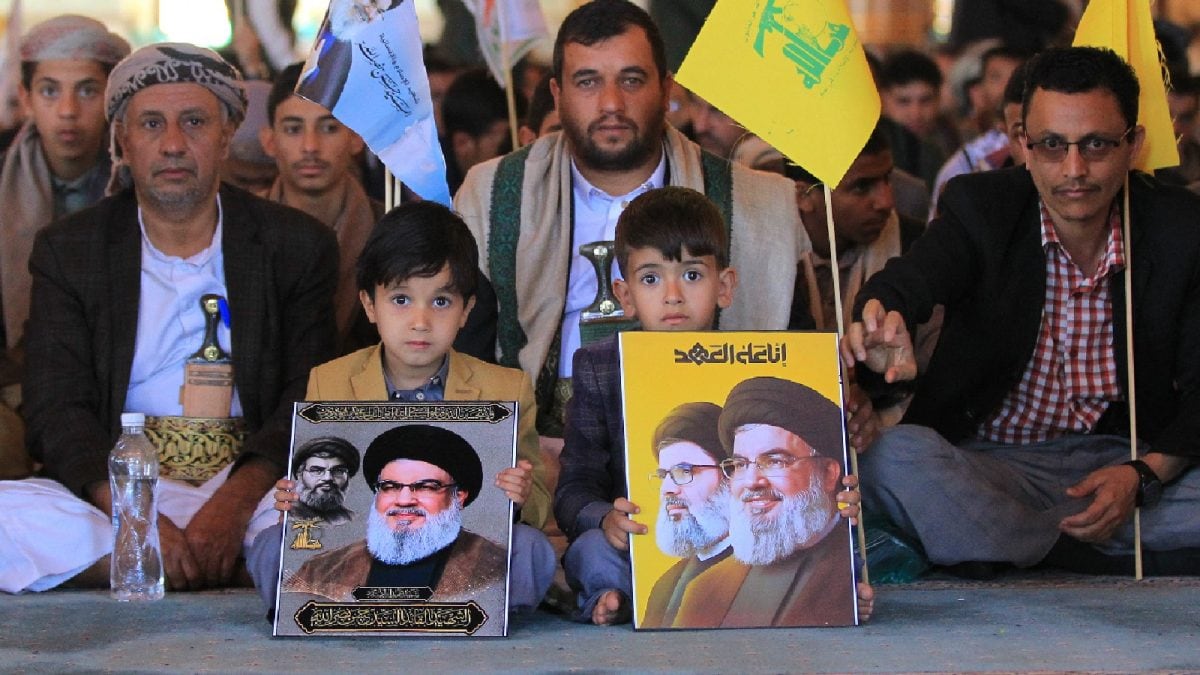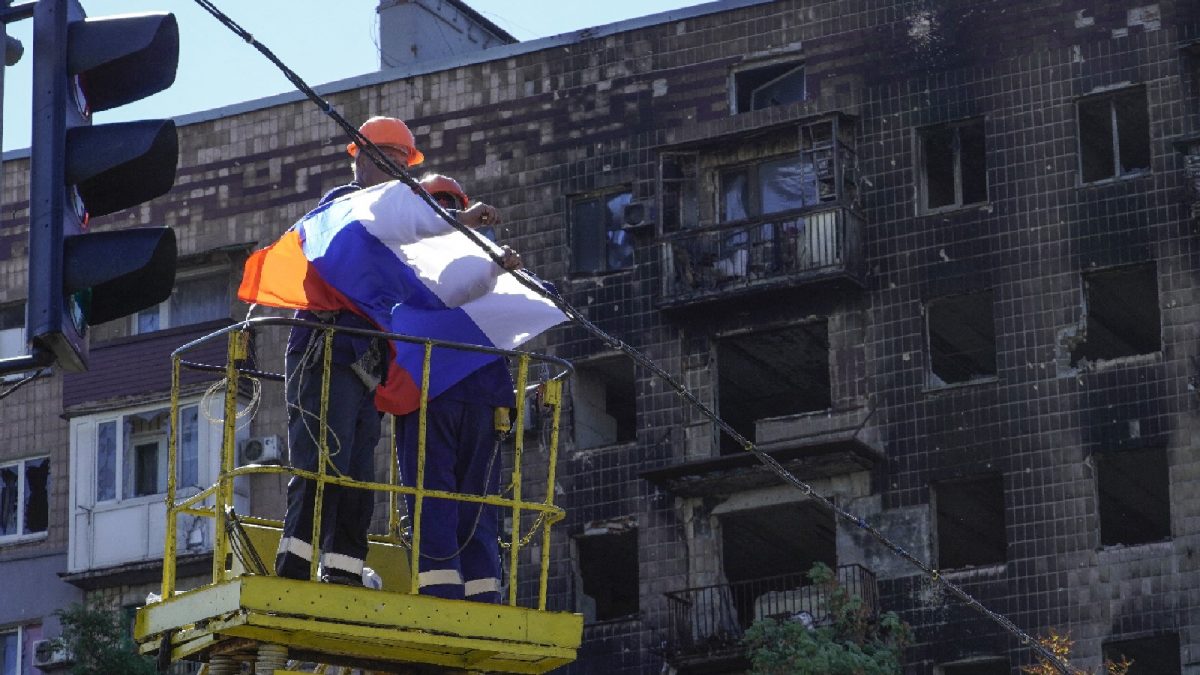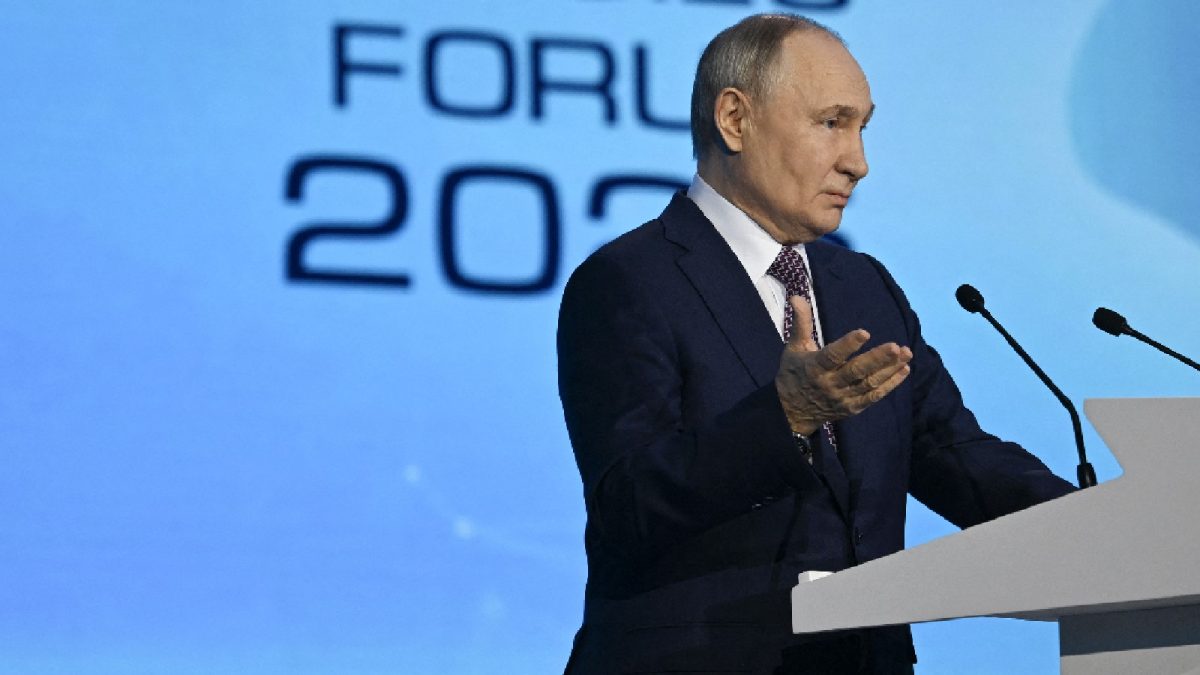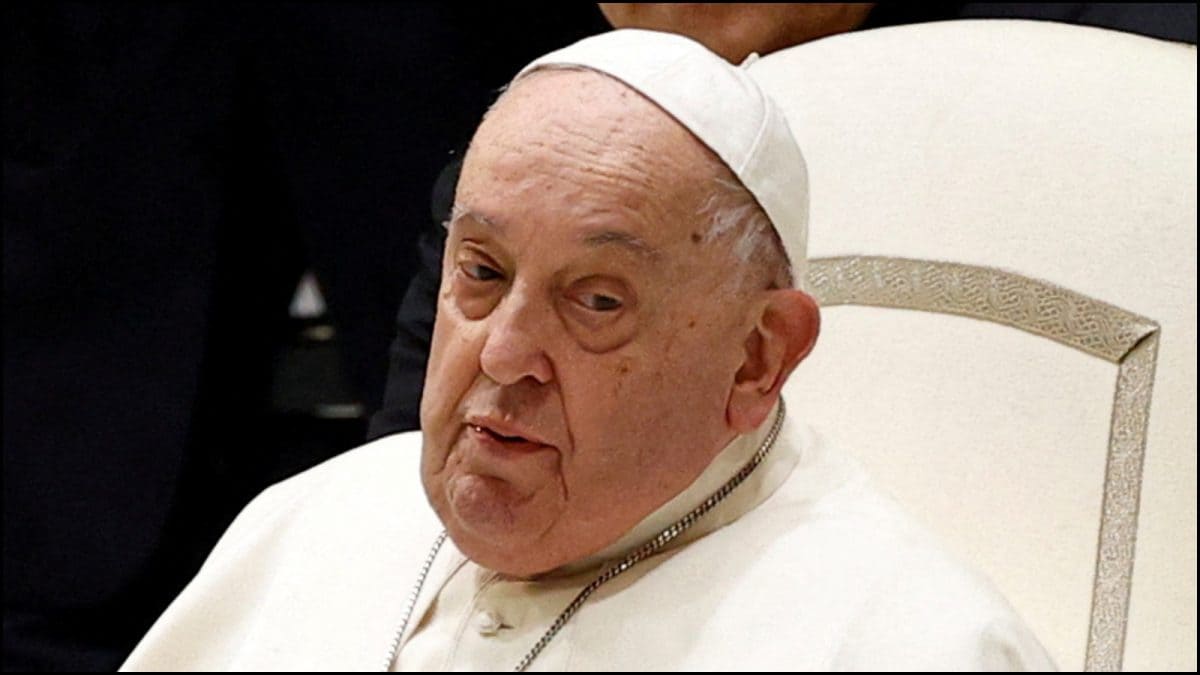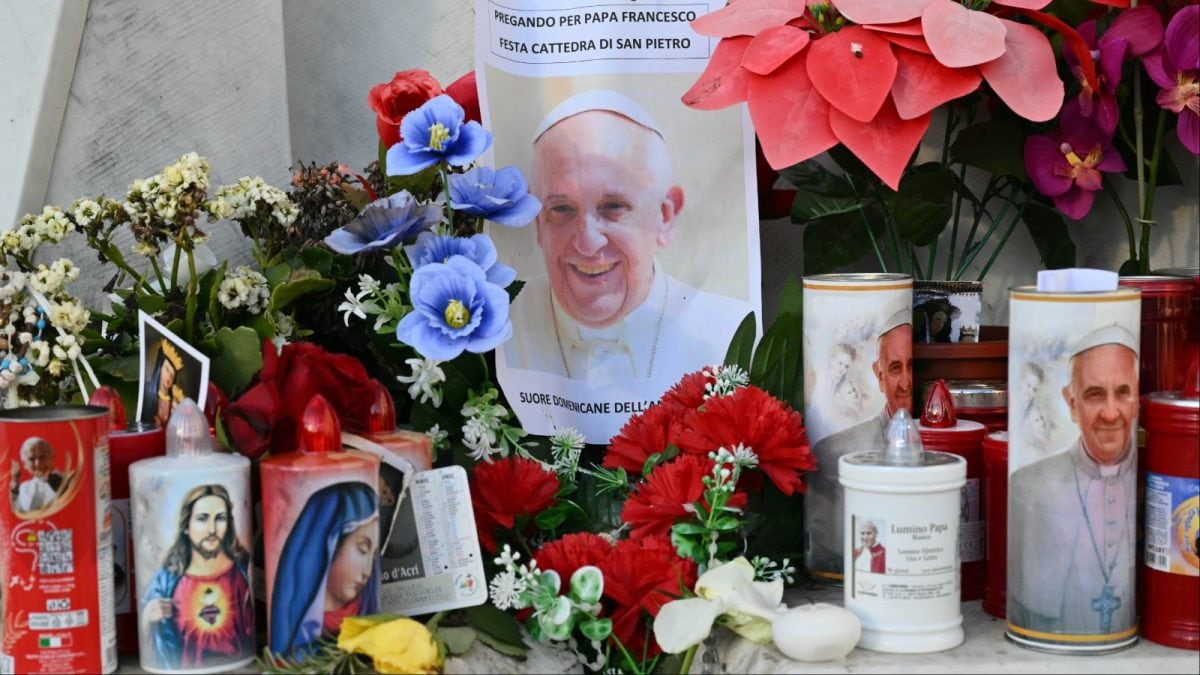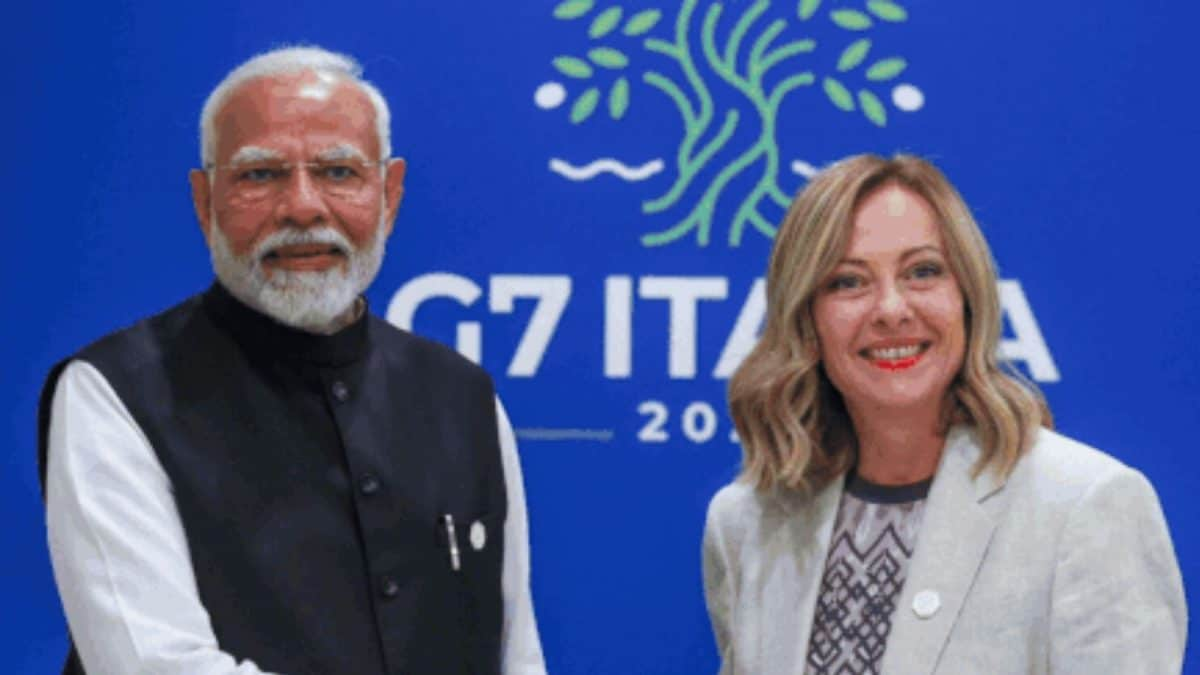Last Updated:December 31, 2024, 13:48 IST
In 2024, the world saw an increased number of conflicts, which also included the already running Russia-Ukraine and Israel-Hamas wars. Middle East tensions further heightened the global instability.

The Middle East tensions have specifically taken a rise in the year 2024 (Photo: AP)
The world witnessed a series of conflicts in the year 2024, that challenged geopolitical landscapes and global stability. With the ongoing Russia- -Ukraine and the Israel-Hamas wars, the year 2024 saw an escalation of Middle-East tensions, with Israel dropping bombs on Lebanon and killing Hezbollah fighters. Meanwhile, Iran warned the United States to keep its military forces out of Israel, thus giving rise to tensions between the two countries.
Additionally, in one of the most recent conflicts, the world saw a massive crisis shaping up in Bangladesh, with Sheikh Hasina fleeing the country to India. Later, the arrest of Chinmoy Krishna Das, a Hindu monk, fuelled protests against Hindu atrocities in the country.
Here are the key conflicts that defined the year, tracing their evolution and impact on the global stage.
RUSSIA-UKRAINE CONFLICT
Since Russia’s all-out invasion of its smaller neighbour on February 24, 2022, Europe’s biggest armed conflict since World War II has cost tens of thousands of lives on both sides. Thousands of Ukrainian civilians have been killed in the fighting. Others have lost their family, their homes and their livelihoods.
Nearly three years into the war, the Russian military has repeatedly used missiles, drones and artillery to blast civilian targets across Ukraine with devastating consequences. The loss of homes and possessions snatched away in the blink of an eye, is traumatic.
In 2024, hundreds of thousands of Ukrainians evacuated and migrated abroad. Those who stayed often had to improvise. That sometimes meant digging mass graves, such as in the besieged port city of Mariupol in 2022 where heavy Russian shelling prevented proper burials and brought despair.

The dreadful toll of war is illustrated in funerals held for soldiers and civilians, including children, and the grief of those attending them.
ISRAEL-GAZA CONFLICT
Israel’s war with Hamas reached its one-year mark in October 2024. However, with many still reeling from Hamas’s October 7 attack, hostages remaining in captivity and a new front of war with Hezbollah in the north, many Israelis feel depressed, despondent and angry as the war stretches into its second year.
Uncertainty over the future has cast a pall over virtually every part of daily life, even as people try to maintain a sense of normalcy.
Hamas’s attack in which some 1,200 people were killed and 250 kidnapped shattered Israelis’s sense of security and stability in their homeland.

Many have been rattled by the war’s evolution. Nearly 100 hostages remain in Gaza, with less than 70 believed to be alive. Israelis have experienced attacks — missiles from Iran and Hezbollah, explosive drones from Yemen, fatal shootings and stabbings — as the region braces for further escalation.
They’ve watched as Israel is accused of committing war crimes and genocide in Gaza and becomes increasingly isolated internationally.
ISRAEL-YEMEN CONFLICT
Yemen’s Iran-backed Houthi rebels, who control Sanaa and much of the country’s north, have gone after Israel since it started attacking Gaza following the October 7, 2023 attacks by Gaza’s Hamas militants on southern Israel. The Houthis have attacked ships in the Red Sea, disrupting one of the world’s main maritime routes, and recently stepped up missile and drone attacks on Israel.
Off late, the Israeli Air Force reported intercepting yet another missile from Yemen, as sirens woke Israelis around Jerusalem and the Dead Sea.

According to the Associated Press, Yemen is the Arab world’s poorest nation and has been engulfed in a 10-year civil war between the Houthi rebels, who control Sanaa and much of the country’s north, and the internationally recognized government forces in the south.
ISRAEL-LEBANON CONFLICT
Hezbollah began striking Israel almost immediately after Hamas’s October 7, 2023, attack that sparked the Israel-Hamas war.
In the days after the attack, Israel’s air force hit targets across Lebanon, killing thousands. Hezbollah’s leader, Hassan Nasrallah, was assassinated when Israel dropped bombs on his bunker.
Especially since late September, Israel has dramatically escalated its bombardment of Lebanon, vowing to cripple the militant group Hezbollah and end its barrages into Israel. Over the past year, more than 3,500 people have been killed in Lebanon by Israeli fire — 80 per cent of them in the past month — Lebanon’s Health Ministry said.

By November, the war between Israel and Hezbollah, a byproduct of the deadly attack by Hamas militants in southern Israel on October 7, 2023, ended with a ceasefire. More than 45,000 Palestinians have been killed in the war in Gaza between Israel and Hamas militants, AP quoted health officials as saying.
ISRAEL-IRAN CONFLICT
Iran has already launched two direct attacks against Israel this year, which has pushed the wider Middle East closer to a broader conflict. Israel is already battling the Iran-backed militant group Hamas in the Gaza Strip and Hezbollah in Lebanon.
The fight against Hezbollah has weakened the group but has also taken a heavy toll on southern Lebanon and other parts of the country.

United Nations agencies estimate that Israel’s ground invasion and bombardment of Lebanon has displaced 1.4 million people. Residents of Israel’s northern communities near Lebanon, roughly 60,000 people, have also been displaced for more than a year.
As Israel has launched successful airstrikes openly inside of Iran, the latter’s longtime stalwart ally and client in Syria, President Bashar Assad, is gone.
THE SYRIAN CONFLICT
The fall of Bashar Assad took many by surprise as tens of thousands of soldiers and members of security services failed to stop the advancing insurgents.
Now in control of the country, and Assad in exile in Russia, the new authorities are investigating atrocities by Assad’s forces, mass graves and an array of prisons run by the military, intelligence and security agencies notorious for systematic torture, mass executions and brutal conditions.
Syria’s nearly 14-year-old civil war fragmented the country, crumbled the economy and created fertile ground for the production of the drug. Militias, warlords and the Assad government transformed the production of Captagon from a small-scale operation run by criminal groups into a billion-dollar industrial revenue stream.

The recent ousting of Assad has disrupted these networks and has given a closer look at its operations — revealing the workings of a war economy that sustained Assad’s power over Syria.
Experts say the change in Syria might create an opportunity to dismantle the Captagon industry.
US-IRAN TENSIONS
For more than a year, the Houthis, controlling northern Yemen, have attacked ships in the Red Sea, severely disrupting a major trade route, and have targeted Israel with drones and missiles. The United States and Britain have also retaliated against the Houthis to protect international waterways.
In 2021, the Trump administration labelled the Houthis a terrorist organisation. The Biden administration lifted the designation weeks later to make it easier for humanitarian aid to enter Yemen. However, early this year, the State Department announced that it was reimposing the label in view of the Houthi attacks on ships.
Months after Hamas militants attacked southern Israel on October 7, 2023, the Houthis, in solidarity with Hamas, said they would target any ship travelling to or leaving Israel and said they had launched drones and missiles at Israel.

But the Houthi criteria for attacking ships quickly expanded to include vessels with direct or indirect links to Israel or past visits to Israeli ports, then also to ships with ties to the United States or Britain, and the Houthis have since broadened the category multiple times.
The Houthis have launched more than 130 attacks with drones and missiles on vessels in the Red Sea and the Gulf of Aden, according to Armed Conflict Location and Event Data, a nonprofit group that tracks the strikes.
IRAN-PAKISTAN CONFLICT
In January 2024, unprecedented cross-border strikes between Iran and Pakistan raised concerns that ongoing conflicts in the Middle East were expanding eastwards.
In July this year, the world witnessed missile strikes between Iran and Pakistan, resulting in casualties on both sides. Later, Pakistan Airlines (PIA) announced that it had stopped all its flights from using Iranian airspace following Iran’s missile attack on Israel.

Iran and Pakistan share a volatile border, stretching about 900 kilometres, and have long fought Baloch terrorists in the region. The Baloch people reside at the convergence of Pakistan, Afghanistan, and Iran.
Historically, they have demonstrated a strong inclination towards independence, harbouring resentment for being governed by both Islamabad and Tehran. Terrorism has persisted in the porous border region for decades.
PAKISTAN-AFGHANISTAN CONFLICT
Pakistani officials have accused the Taliban of not doing enough to combat cross-border militant activity, a charge the Taliban government denies, saying it does not allow anyone to carry out attacks against any country from its soil.
Earlier this year, Pakistan witnessed a surge in militant violence in recent months, mostly blamed on Pakistani Taliban and insurgents targeting security forces in Pakistan and neighbouring Iran.
Of late, Pakistan launched an operation to destroy a training facility and kill insurgents in Afghanistan’s eastern Paktika province. The strikes killed dozens of people, mostly women and children.

Comments from the Taliban Defense Ministry confirmed that its forces targeted Pakistani points that “served as centres and hideouts for malicious elements and their supporters who organised and coordinated attacks in Afghanistan".
BANGLADESH TENSIONS
Following Sheikh Hasina’s ouster, minorities — and particularly Hindus — have reported widespread attacks in the Muslim-majority nation of Bangladesh. However, the country says the reports are widely exaggerated.
The protesters demanded an intervention by the United Nations, carrying banners and placards that criticised the world body for not doing more to address the problems in Bangladesh. They also rejected claims by interim government officials in Bangladesh that the targeting of minorities was an internal matter.
Tensions spiked over the recent arrest of a Hindu spiritual leader in Bangladesh, which is currently being run by an interim government led by Nobel laureate Muhammad Yunus. India also stopped issuing visas to Bangladeshis, except for emergency medical visas, after Hasina fled. Many Indian nationals working on infrastructure projects also left Bangladesh because of security threats.

Scores of social and cultural organisations joined the protest in New Delhi a day after top Foreign Ministry officials from the two countries, Vikram Misri and Mohammad Jashim Uddin, met in Dhaka, the Bangladesh capital, to discuss their strained relations. It was the first high-level visit to Bangladesh by an Indian official since massive protests ended Hasina’s 15-year rule.
PAKISTAN ELECTION VIOLENCE
General elections in Pakistan earlier this year were marred by militant attacks and suspension of mobile phone services, with no indication of a clear leader hours after voting closed – an unusual delay compared to previous polls. Later, Shehbaz Sharif returned to power in the country.
The main contest was between candidates backed by jailed former Prime Minister Imran Khan, whose party won the last national election, and the Pakistan Muslim League of former Prime Minister Nawaz Sharif, whom analysts say is backed by the powerful military.

Thousands of troops were deployed on the streets in Pakistan and at polling stations across the country.
Despite the heightened security, nine people, including two children, were killed in bomb blasts, grenade attacks and shootings.
At least another 26 were killed in two explosions near electoral candidates’ offices in the southwestern province of Balochistan. Islamic State later claimed responsibility for those attacks.
Location : First Published:December 31, 2024, 13:47 IST
News world Year Ender 2024: World's Biggest Crisis And Conflicts

 1 month ago
1 month ago
